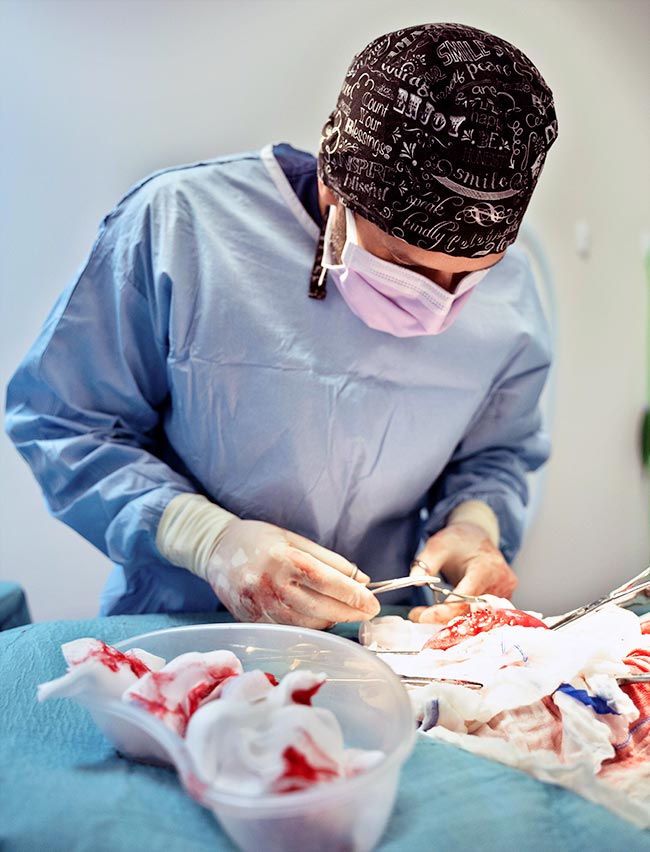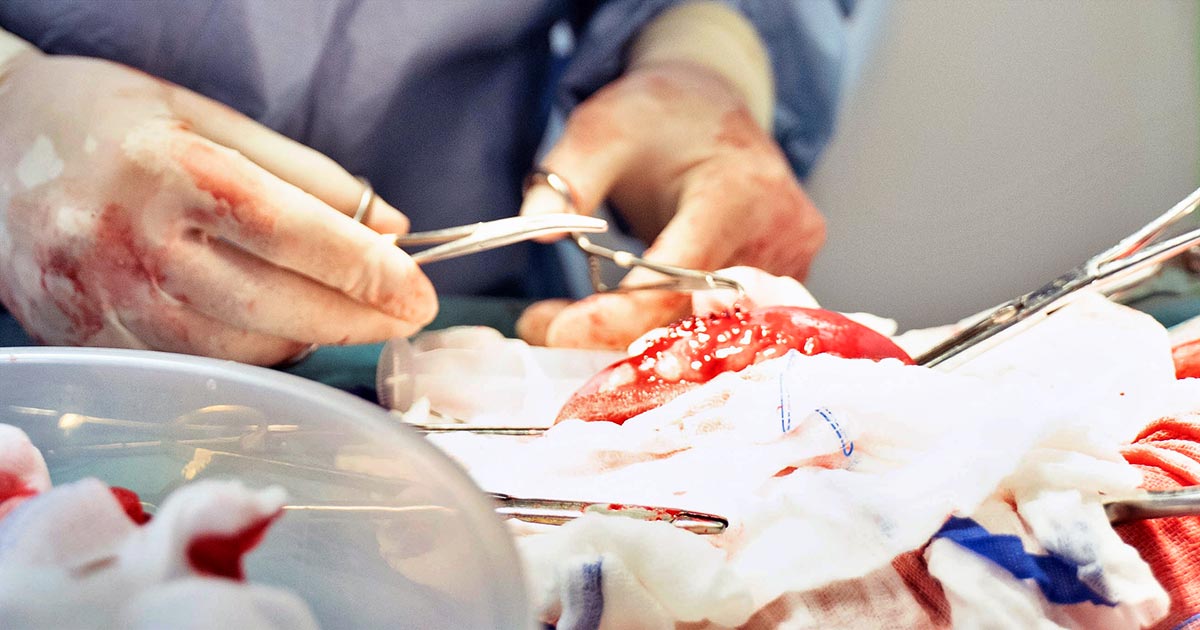Here are some tips on how to keep the rest of the abdomen sterile while entering or resecting part of the small intestine.
Exteriorise segment
 Exteriorise the segment of intestine as much as possible out of the abdominal cavity and use multiple moistened lap sponges to pack around the intestine to protect the rest of the abdominal cavity from possible spillage.
Exteriorise the segment of intestine as much as possible out of the abdominal cavity and use multiple moistened lap sponges to pack around the intestine to protect the rest of the abdominal cavity from possible spillage.
You can even go so far as using another fenestrated drape on top of your first set of drapes and passing the intestinal segment through it.
Instruments
Use a designated set of instruments for the enterotomy/enterectomy. I place them in a kidney dish to minimise the potential of contaminating the rest of my instruments, surgical field or table.
Allis clamp
I avoid using my fingers to grasp the foreign bodies as much as possible, despite the fact I may be changing gloves.
Instead, I mostly use allis clamps – they are commonly included in complex surgery or exploratory laparotomy kits, and the teeth and scissor action helps to grasp foreign bodies better.
Milk away contents
Before entering the intestinal lumen or removing a segment, I milk away the contents from the incision site(s) – both oral and aboral – and have an assistant apply pressure with his or her fingers with a scissor-like action, and/or use a pair of doyen clamps.
This reduces the risk of – or the amount of – leakage.
Kidney dish
I like to place a kidney dish under the exteriorised segment to catch any leakage, place the foreign body or resected segment of intestine in – and for any instruments and swabs I use.
The kidney dish then contains all the contaminated instruments, swabs and tissue.
Focal lavage
Once completed, I perform a focal lavage with syringes of lavage fluid into the kidney dish, or on to the lap sponges that have been used to pack off the area. Then I remove the used lap sponges, change gloves and replace the used instruments.
Lavage of abdomen
Finally, lavage of the abdomen. Now comes the tricky question – how much lavage fluid do you use?
For me, this depends on the surgery; you will find different answers based on what you read.
The common suggested ranges are between 100ml/kg and 300ml/kg of isotonic crystalloid (most commonly 0.9% saline), depending on the degree of contamination, with lavage continuing until the fluid comes clear.
I make sure the fluid is warmed, but not too hot. Another helpful tip is that you can buy laser temperature readers from hardware stores that can measure the temperature of lavage fluid – so getting it as close to body temperature as possible is so much easier.
Also, no benefit exists in adding antibiotics or antiseptics to the lavage fluid.
Suctioning as much of the lavage fluid as possible is also helpful if you want to track abdominal focused assessment with sonography for trauma (AFAST) scores, as increasing AFAST scores can help you determine if you need to go back in.

Leave a Reply